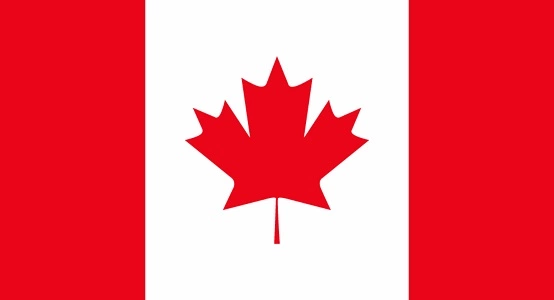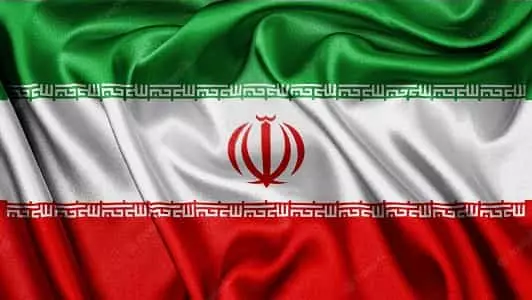Petroleum is the second liquid on which humans rely most heavily after water. It is a fuel source and is usually present in consumer goods. To begin, petroleum is a liquid element that is found in nature. Either black or yellow colors describe it. Under the earth’s crust, geological formations are where it is typically found.
In terms of its makeup, petroleum is a concoction of hundreds of molecules and chemical compounds. However, most of them are composed of different molecular weight hydrocarbons.
Petroleum products are processed from crude oil or other liquids made from fossil fuels. Petroleum is used by people for a variety of things. Biofuels are utilized similarly to petroleum products, most commonly in blends with gasoline and diesel.
For the entire yearly energy consumption of the United States, petroleum has traditionally been the largest main energy source. Petroleum-based products are used to power vehicles, heat buildings, and generate energy. Plastics, solvents, polyurethane, and countless more intermediate and finished commodities are produced by the petrochemical industry, which is a part of the industrial sector.
Top Countries for Petroleum Production in World
Here is the list of top countries with the most petroleum production in the world:
1. The United States
The United States is ranked first among these top 10 oil-producing nations. To achieve 18,875,000 BPD last year, its output climbed by 266,000 BPD from the 2020 objective. Due to its production fluctuating along with market prices, the US has been called a swing producer. Texas is the nation’s top oil-producing state, with output approximately four times more than that of New Mexico, which is in second place.
The US consumes a lot of oil, on top of being a large producer of it. The US consumed 7.22 bn barrels of all petroleum products in total last year or 19.78 million BPD on average.
The shale fracturing revolution of the past ten years, which gave access to various unconventional resources that were earlier not economically viable to exploit, has been the driving force behind the country’s progress.
2. Saudi Arabia
Saudi Arabia acquires the second spot on this list. In 2021, Saudi Arabia produced 10,835,000 BPD of oil. The nation is the greatest exporter of petroleum and holds 17% of the world’s proven petroleum reserves. Its oil and gas industry is responsible for around 85% of its export revenue and about 50% of its GDP (Gross Domestic Product).
As already established, Saudi Arabia was crucial to OPEC’s decision to cut oil production in 2020. To comply with the terms of an agreement made with other OPEC (Organization of the Petroleum Exporting Countries) members and partners, the nation decided to cut output by 3.3 million BPD. As a result of the country’s deteriorating ties with the US in 2022, the Arab kingdom doesn’t appear willing to raise output to lower growing gasoline prices.
Ghawar, Safaniya, Manifa, Qatif, Khursaniyah, Khurais, Shaybah, Abqaiq, and Zuluf are some of Saudi Arabia’s most important oil fields.
3. Russia
Russia ranks third on this list. Russian petroleum output had been increasing for several years before the production limits in 2020; it reached 10,778,000 BPD compared to last year. The Urals-Volga region, which stretches into the Caspian Sea, and West Siberia, which is situated between both the Central Siberian Plateau and the Ural Mountains are where the majority of Russia’s reserves are found.
Russia produces 10% of the world’s oil and ranks third in terms of production. Canada, the United States, the UK, and Australia have all imposed import bans on Russian oil, which accounts for around 13% of Russia’s exports, in response to its involvement in the conflict in Ukraine.
The IEA (International Energy Agency) issued a warning in March 2022 that Russia would be compelled to reduce its crude oil production by 30%, which would cause a catastrophic global oil supply crisis.
4. Canada
Canada is the next nation on this list. The nation’s yearly oil output increased from 5,235,000 BPD in 2020 to 5,568,000 BPD in 2021. The majority of Canada’s proven oil reserves are found in Alberta, and the oil sands make up 97 percent of those reserves, according to the provincial government. The vast bulk of Canada’s total energy exports is headed to the US. However, due to political and economic factors, Canada is working to expand its trading partners, particularly by strengthening connections with developing Asian economies. The Western Sedimentary Basin of Canada, Atlantic offshore fields, and Alberta’s oil sands are Canada’s primary sources of oil production.
5. China
In 2021, China produced 4,993,000 BPD of oil annually. The country is the second-biggest oil consumer in the world, and in 2014 it became the biggest net importer of oil.
China has the highest overall energy consumption in the world because of its large population and quickly expanding economy. In actuality, the Asian nation consumes the most oil, with 55 % of its imports arriving from OPEC nations.
Large, state-owned businesses, such as Sinopec, China National Petroleum Corporation, and CNOOC (China National Offshore Oil Corporation), dominate production in the nation.
The nation imports a significant amount of its crude overseas, primarily from Saudi Arabia, and is the 2nd largest user of oil in the world after the US.
6. Iraq
Despite boosting its output, Iraq lost ground to Saudi Arabia to become the sixth-largest oil producer in 2017. The Middle Eastern country regained its sixth-place position thanks to output in 2018.
The nation’s oil output has sharply declined in recent years, going from 4,788,000 barrels per day in 2019 to 4,159,000 in 2021. With 145 billion barrels, it holds the fifth-largest proven oil reserves in the world, accounting for 8.4% of total reserves.
7. UAE
On number 7, we have the United Arab Emirates. The UAE is a member of OPEC and has consistently been one of the top ten oil-producing nations in the world. Production in 2021 increased somewhat year over year, with oil output increasing to 3,786,000 BPD.
With 98 billion barrels of proven oil reserves, the nation ranks seventh in the world, with the majority of those reserves being in Abu Dhabi. 5.6% of the total reserves in the world are held by the United Arab Emirates.
8. Brazil
Brazil’s oil output decreased marginally in 2021, from 3,689,000 BPD in 2020 to 3,769,000 BPD. Brazil’s overall primary energy consumption has nearly doubled over the previous ten years, according to the EIA, as a result of its consistent economic expansion. Oil and other liquid fuels account for the greatest portion of Brazil’s overall energy consumption, following hydroelectricity and natural gas.
According to reports, Brazil and the US were negotiating in April 2022 to expand oil production in reaction to Russia’s conflict in Ukraine.
9. Iran
Iran produced 3,458,000 BPD of oil in 2021 compared to 2,990,000 BPD in 2020, which is a very sharp rise. Iran has the second-largest proven natural gas reserves and the third-largest proven oil reserves in the world, according to the EIA. Iran’s oil production has significantly decreased recently despite having ample reserves; in 2017, it was 4,779,000 BPD.
Iran’s energy production industry has been hampered by the United States sanctions and regional conflicts. China has urged the US to lift its sanctions against Iran in light of the recent signing of a 25-year trade and security agreement.
10. Kuwait
Kuwait is the last nation on this list. Kuwait’s output fell in 2021 again for 3rd time after 2018. Production peaked in 2016 at 3,072,000 BPD and fell to 3,015,000 BPD in the year 2017. In 2018, the nation’s production increased slightly to 3,059,000 BPD; however, it decreased once more in the year 2019 to 3,017,000 BPD.
The oil and gas industry in Kuwait contributes over 60% of the nation’s GDP and an even bigger share—almost 95%—of its export earnings. The enormous Burgan oilfield, one of the largest in the world, is located in the southeast of the nation and is managed by the state-owned Oil Company of Kuwait
The Sabriya and Raudhatain fields are just two of the key oilfields in northern Kuwait.
Conclusion
The majority of petroleum is collected through oil drilling, and its components are separated through a procedure known as fractional distillation. Crude oil that hasn’t been refined and other goods produced from it are both referred to as petroleum. On the banks of the Euphrates River, one of the earliest civilizations known as the Sumerians discovered petroleum. They employed it for a variety of tasks, including waterproofing and building roads. Petroleum comes in a variety of forms, including bitumen, natural gas, and crude oil. Understanding the many varieties and how they are made is crucial.
Petroleum Production FAQs
Q1. How Does The Petroleum Industry Affect Global Politics And The Economy?
Ans: Countries blessed with abundant natural petroleum reserves, such as the Middle East, Russia, and the United States, have a significant impact on the global level. Their control over the oil supply can change the oil prices overnight which can impact both oil importers and exporters. As a result, nations often engage in diplomatic maneuvering, forge strategic alliances, and even enter into conflicts to secure their energy interests.
Q2. How Does The Price Of Petroleum Affect Everyday Consumers?
Ans: When petroleum prices go up, the costs of producing and transporting goods also rise, which translates to higher price tags on a wide array of products. Prices of electronics to food items tend to fluctuate because of this. And this surge in petroleum prices subsequently causes the overall cost of living to soar, putting a strain on household budgets and influencing the entire economy.
Q3. What Role Does Technology Play In The Petroleum Industry?
Ans: There are many technological advancements that have made it possible to discover new oil reserves, refine drilling techniques, and boost recovery methods, optimizing petroleum production. Moreover, technology is instrumental in monitoring and mitigating the environmental fallout from petroleum extraction and processing.
Q4. What Are The Future Prospects For The Petroleum Industry, Given The Increasing Focus On Renewable Energy?
Ans: As the drive for renewable energy to combat climate change gains momentum, the demand for petroleum is expected to slowly wane. However, since an abrupt shift to renewable energy is unfeasible, petroleum will continue to play a major role in the global energy landscape for the foreseeable future, primarily powering transportation and various industries. Over time, the petroleum industry may shift to greener energy alternatives, such as biofuels or hydrogen.
Q5. How Has The Covid-19 Pandemic Affected The Production Of Petroleum?
Ans: The pandemic threw a wrench in the works for many oil-producing nations, as dwindling revenues forced them to cut production and postpone investments in new projects. While the situation has gradually improved as countries have relaxed restrictions and the global economy has begun to bounce back, the pandemic underscores the need for the petroleum industry to build resilience and adaptability to tackle future challenges.

























